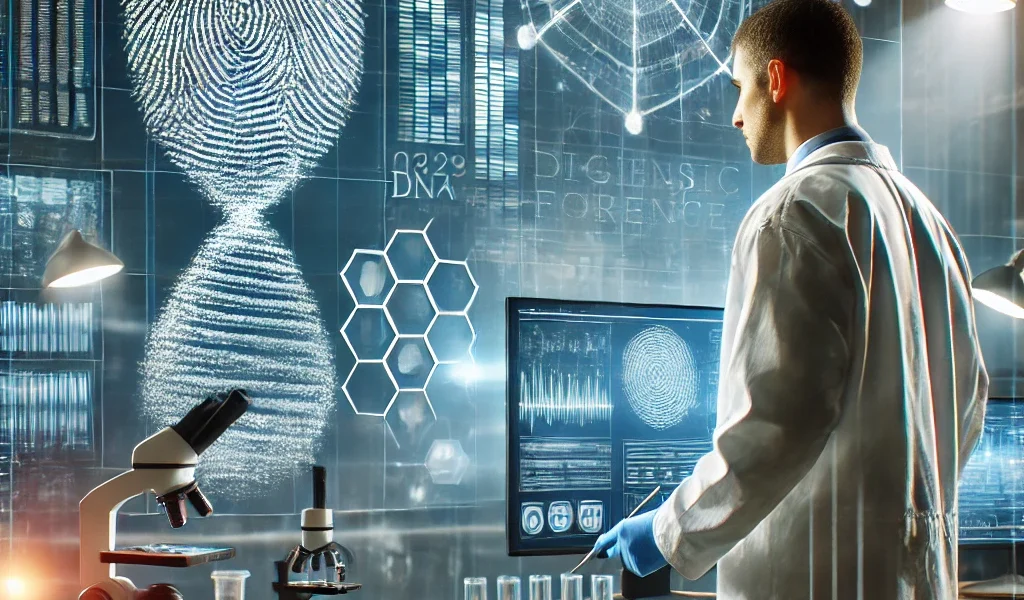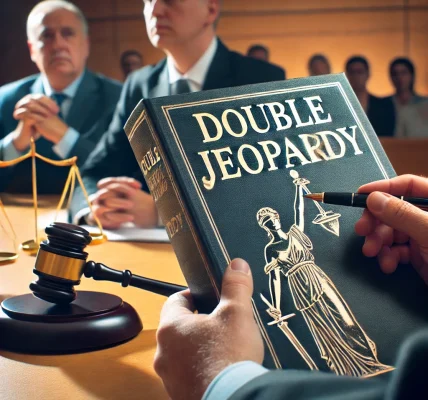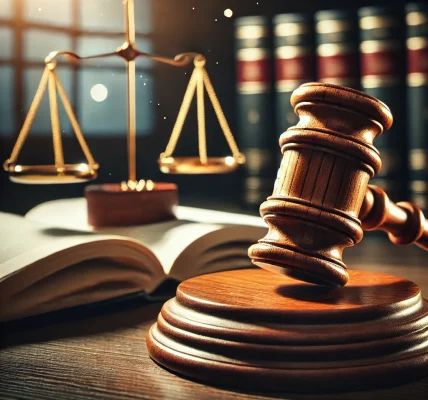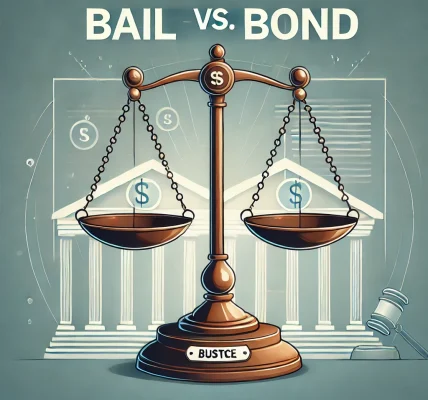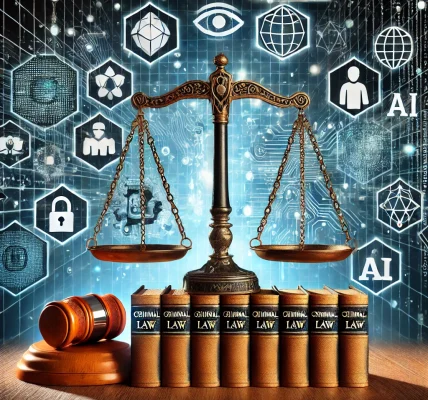Introduction
Forensic evidence plays a crucial role in criminal cases, often determining the difference between conviction and acquittal. This type of evidence includes DNA analysis, fingerprints, ballistic reports, digital forensics, and more. While forensic evidence can strengthen a case, it is also subject to errors, misinterpretation, and challenges that may impact a defense strategy.
In this blog, we will explore how forensic evidence is used in criminal trials, its reliability, potential weaknesses, and how defendants can challenge forensic findings effectively.
1. What is Forensic Evidence?
Forensic evidence refers to scientific techniques and technologies used to analyze physical, biological, and digital materials related to a crime. Law enforcement agencies, forensic experts, and legal professionals rely on these methods to establish facts in criminal cases.
Types of Forensic Evidence:
- DNA Analysis: Identifies individuals based on genetic material found at a crime scene.
- Fingerprint Analysis: Matches prints to suspects or victims.
- Ballistics Testing: Examines bullets, gunpowder, and firearm markings.
- Digital Forensics: Recovers and analyzes electronic data from computers, phones, and other devices.
- Toxicology Reports: Determines the presence of drugs, alcohol, or poisons in a person’s system.
- Blood Spatter Analysis: Helps reconstruct crime scenes based on blood patterns.
- Handwriting Analysis: Examines documents for forgery or authorship identification.
Forensic evidence can be used to support the prosecution by linking a suspect to a crime or to defend an accused person by disproving allegations or creating reasonable doubt.
2. The Role of Forensic Evidence in Criminal Cases
Forensic evidence serves three primary functions in criminal trials:
a) Establishing Guilt
Prosecutors use forensic evidence to confirm a suspect’s involvement in a crime. DNA found at a crime scene, fingerprints on a murder weapon, or ballistic tests linking a firearm to a shooting can provide compelling proof of guilt.
b) Proving Innocence
Forensic evidence can also be used to exonerate the wrongly accused. DNA evidence has helped overturn wrongful convictions in many cases. If forensic analysis proves a suspect’s fingerprints or DNA do not match those found at the crime scene, it can lead to their acquittal.
c) Reconstructing Crime Scenes
Forensic experts analyze bloodstains, bullet trajectories, and surveillance footage to piece together how a crime occurred. This can support or refute witness testimony and help the court determine the credibility of different accounts.
3. Challenges and Weaknesses in Forensic Evidence
While forensic science is highly regarded, it is not infallible. Many cases have been affected by unreliable forensic methods or human error. Some common challenges in forensic evidence include:
a) Contamination and Tampering
- Evidence collected at a crime scene can be contaminated if proper procedures are not followed.
- Mishandling by law enforcement officers or forensic labs can compromise the reliability of the evidence.
b) Inaccurate or Misleading Forensic Techniques
- Some forensic techniques, such as bite mark analysis and hair comparison, have been discredited due to their high error rates.
- Polygraph (lie detector) tests are not admissible in most courts due to their unreliability.
c) Human Error and Bias
- Forensic experts can make mistakes when analyzing evidence.
- Some forensic examiners may have biases that influence their findings, especially if they are working closely with law enforcement.
d) Misinterpretation of Results
- Juries and judges may misunderstand forensic evidence, believing it to be more conclusive than it actually is.
- DNA evidence, for instance, can sometimes produce false positives due to lab contamination or coincidental partial matches.
e) Wrongful Convictions Based on Faulty Forensics
Several people have been wrongly convicted due to flawed forensic science. The Innocence Project has helped exonerate numerous individuals through the re-examination of forensic evidence.
4. How to Challenge Forensic Evidence in Court
If you are facing criminal charges and forensic evidence is being used against you, there are several ways to challenge its validity:
a) Question the Collection and Handling of Evidence
- Defense attorneys can examine whether evidence was collected following proper legal procedures.
- If the chain of custody is broken, the evidence may be inadmissible in court.
b) Challenge the Credibility of Forensic Experts
- Defense teams can cross-examine forensic experts to identify potential biases or weaknesses in their testimony.
- If the expert lacks proper credentials or has a history of errors, their credibility can be challenged.
c) Request Independent Forensic Testing
- A second opinion from an independent forensic expert can uncover errors in the prosecution’s forensic analysis.
- In some cases, independent DNA or fingerprint re-analysis has proven suspects innocent.
d) Highlight Limitations and Misinterpretations
- Defense lawyers can educate the jury on the limitations of forensic science.
- They can show how techniques such as bite mark analysis or voice spectrogram analysis lack scientific reliability.
e) Use Legal Precedents of Wrongful Convictions
- Referencing past cases where forensic evidence led to wrongful convictions can create doubt in the minds of jurors.
- Courts may be more cautious about relying solely on forensic evidence if reasonable doubt exists.
5. The Future of Forensic Science in Criminal Law
Advancements in forensic technology continue to improve the accuracy and reliability of evidence used in court. Some key developments include:
a) Improved DNA Analysis Techniques
- Rapid DNA Testing provides results in minutes, reducing errors from prolonged handling.
- Touch DNA allows forensic scientists to detect genetic material from minimal contact.
b) Artificial Intelligence (AI) in Forensics
- AI is being used to analyze forensic evidence more objectively, reducing human bias.
- Machine learning algorithms help detect patterns in fingerprints, digital evidence, and crime scene reconstructions.
c) Blockchain for Evidence Integrity
- Blockchain technology is being explored to ensure forensic evidence cannot be tampered with.
- This would create a secure digital record of all forensic findings.
d) More Stringent Forensic Standards
- The legal system is recognizing the need for higher forensic standards, ensuring that only reliable evidence is admissible in court.
- Organizations like the National Institute of Standards and Technology (NIST) are working to improve forensic reliability.
Conclusion
Forensic evidence is a powerful tool in criminal cases, but it is not foolproof. While it can be used to establish guilt, it can also be challenged based on contamination, human error, and unreliable forensic methods.
If you are facing criminal charges, understanding how forensic evidence works—and how it can be challenged—could be critical to your defense. Consulting with an experienced criminal defense attorney who understands forensic science can make a significant difference in your case outcome.
With technological advancements improving forensic accuracy, the future holds promise for a more reliable and just legal system. However, ensuring forensic evidence is properly collected, analyzed, and presented remains essential to protecting the rights of the accused.
